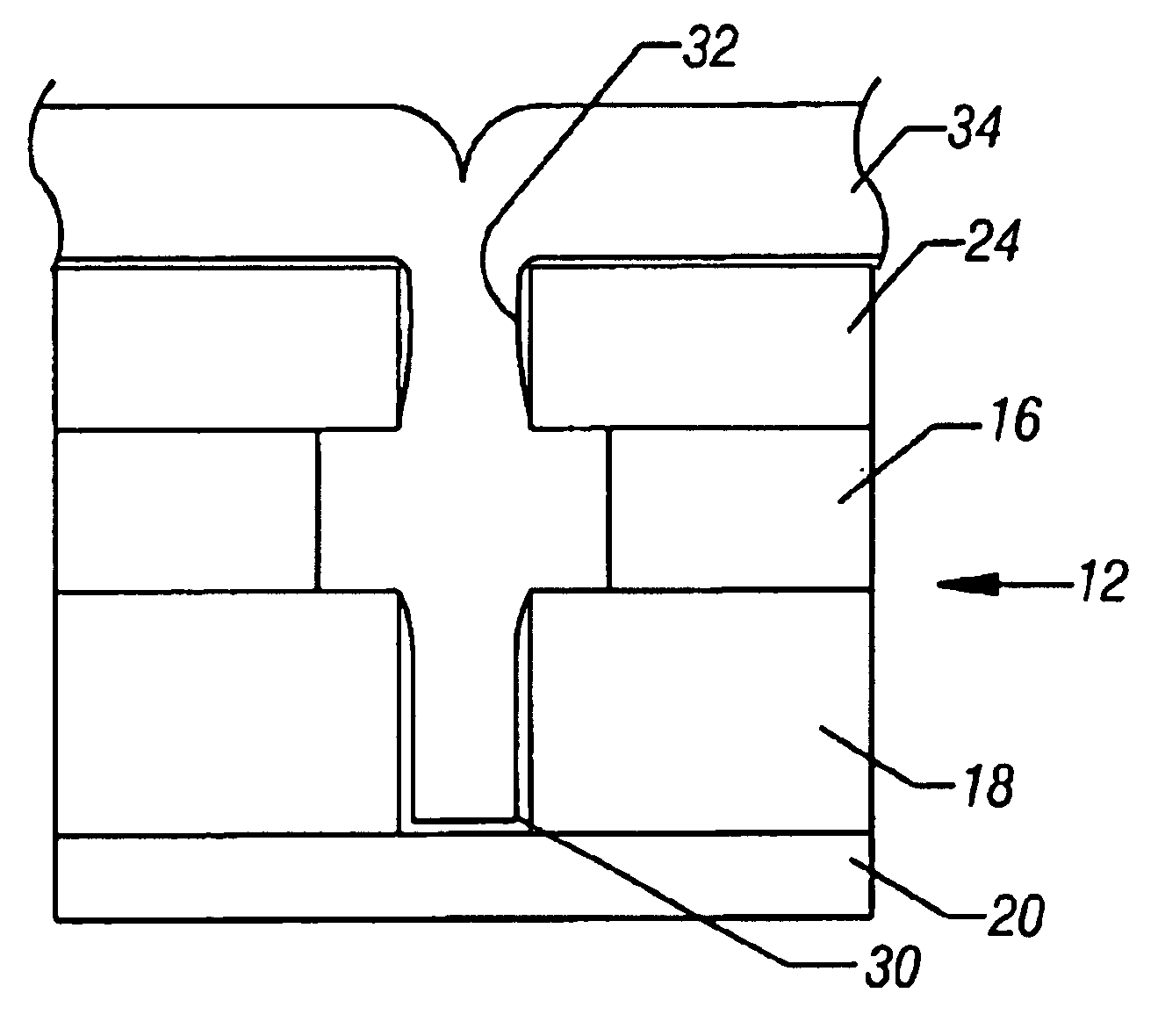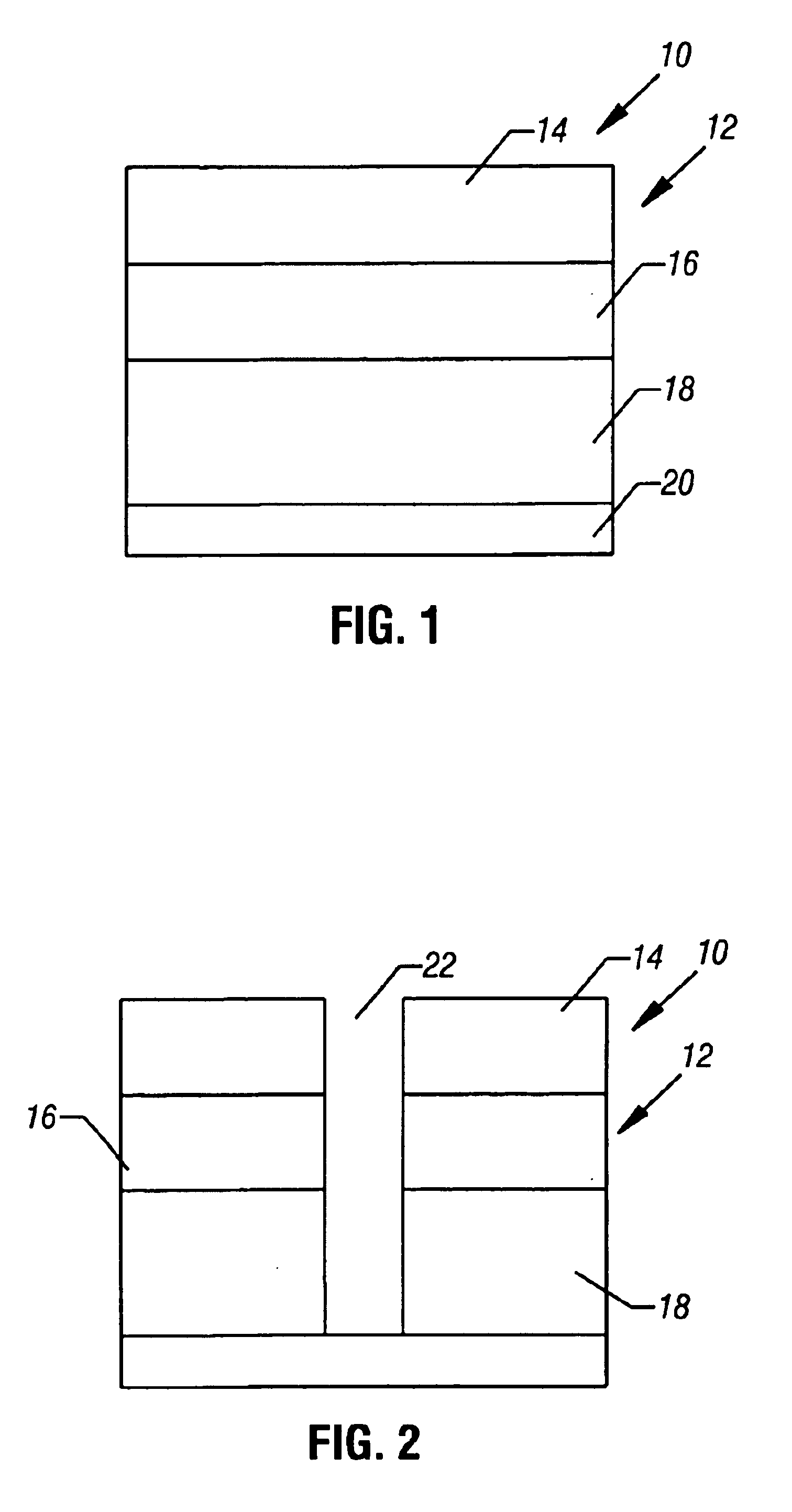Reducing shunts in memories with phase-change material
a phase-change material and shunt technology, applied in the field of memories, can solve the problems of difficult determination of resistivity of phase-change material, poor adhesion between dielectric material and phase-change material,
- Summary
- Abstract
- Description
- Claims
- Application Information
AI Technical Summary
Problems solved by technology
Method used
Image
Examples
Embodiment Construction
Referring to FIG. 1, a plurality of layers may be formed on a substrate or contact 20. The contact 20 may be cobalt silicide or any other conductive electrode in one embodiment. The contact 20 in some embodiments may be formed on still other structures. Over the contact 20 is a first dielectric layer 18. Over the first dielectric layer 18, may be a second dielectric layer 16. Over the second dielectric layer 16 may be a third dielectric layer 14 in one embodiment of the present invention. The dielectric layers 14, 16 and 18 define a dielectric 12, in accordance with one embodiment of the present invention, of a memory cell 10. In one embodiment, a nitride oxide nitride dielectric 12 may be utilized.
In accordance with one embodiment of the present invention, at least one layer of the dielectric 12 may be selectively and differentially etched. While an embodiment is shown with three layers, two or more layers may be utilized in other embodiments.
Referring to FIG. 2, in accordance with...
PUM
 Login to View More
Login to View More Abstract
Description
Claims
Application Information
 Login to View More
Login to View More - R&D
- Intellectual Property
- Life Sciences
- Materials
- Tech Scout
- Unparalleled Data Quality
- Higher Quality Content
- 60% Fewer Hallucinations
Browse by: Latest US Patents, China's latest patents, Technical Efficacy Thesaurus, Application Domain, Technology Topic, Popular Technical Reports.
© 2025 PatSnap. All rights reserved.Legal|Privacy policy|Modern Slavery Act Transparency Statement|Sitemap|About US| Contact US: help@patsnap.com



